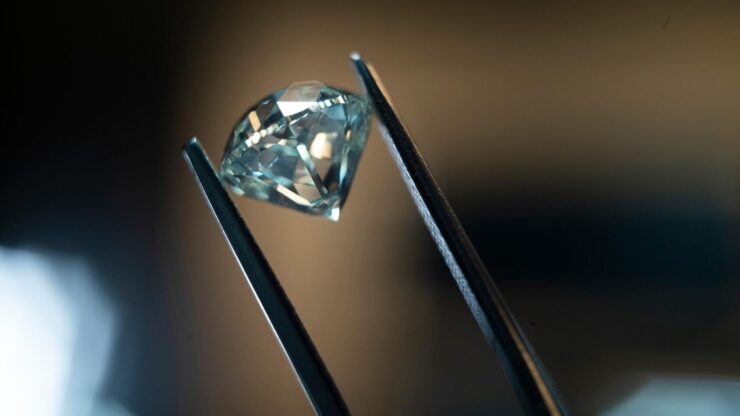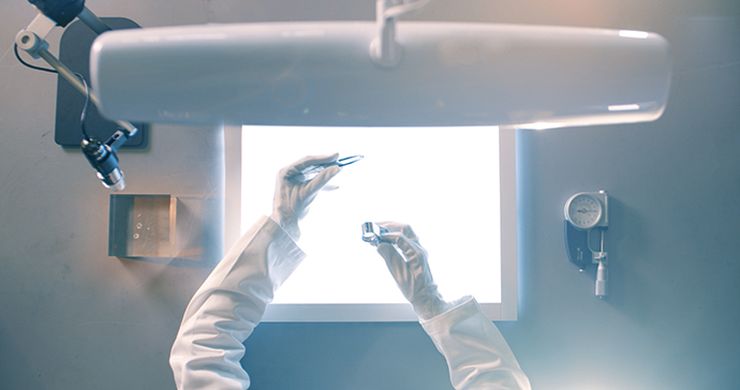Lab-grown diamonds have become a popular choice in the jewelry industry due to their ethical and sustainable nature, as well as their high-quality features. With technological advancements, producing high-quality lab-grown diamonds has become more accessible, efficient and cost-effective.
Introduction to Lab-Grown Diamonds: Definition and Production Process

Lab-grown diamonds are also known as synthetic or cultured diamonds. They are created in a laboratory using advanced technological processes that simulate the natural formation of diamonds in the earth’s crust. The production process involves mimicking the high-pressure, high-temperature conditions that form diamonds in the earth’s mantle.
They are created by one of two processes; High Pressure-High Temperature (HPHT) or Chemical Vapour Deposition (CVD). In the HPHT process, a diamond seed is placed in a high-pressure press with a carbon source and a metal catalyst. The press then simulates the high pressure and high temperature found in the earth’s mantle. The carbon atoms then attach themselves to the seed, growing it layer by layer.
In the CVD process, a seed is placed in a low-pressure chamber with a carbon-rich gas such as methane. The gas is ionized by a plasma torch and broken down into its individual carbon atoms. The carbon atoms then attach themselves to the seed, growing it layer by layer.
Advancements in Technology for Lab-Grown Diamond Production

The process of producing high-quality lab-grown diamonds requires a significant amount of technological advancements. These advancements have led to improved efficiency, quality, and production capacity. The two most important advancements in technology that have impacted their production are automation and artificial intelligence.
With the help of automation, manufacturers can control and monitor the entire process, from raw material input to final output, ensuring consistent quality and purity. Artificial intelligence is also used to analyze data and optimize the production process, leading to increased efficiency and reduced wastage.
Overall, advancements in technology have revolutionized the lab-grown diamond industry, making it a viable alternative to traditional mining. With further research and development, we can expect to see even more efficient and sustainable methods of their production in the future.
Types of Equipment and Techniques used for Lab-Grown Diamond Production
There are various types of equipment and techniques used in lab-grown diamond production, depending on the specific process used. The HPHT process requires a high-pressure press, while the CVD process requires a low-pressure chamber and a plasma torch.
Other equipment used in their production includes microscopes, diamond testers, and spectrometers. These tools are used to examine its physical and chemical properties, ensuring they meet the necessary quality standards.
Role of Automation and Artificial Intelligence in Lab-Grown Diamond Production
Automation and artificial intelligence have played a significant role in the advancement of lab-grown diamond production. Automation has allowed for increased production capacity, lower costs, and higher efficiency. Machines can now perform tasks such as diamond cutting and polishing, which were previously done by hand.
Artificial intelligence has also been used to improve the quality of lab-grown diamonds. AI algorithms can analyze data from the production process, identify patterns and make adjustments to improve its quality.
Quality Control and Assurance in Lab-Grown Diamond Production
The quality of lab-grown diamonds is essential to their value and popularity. To ensure high-quality ones, strict quality control and assurance measures are put in place throughout the production process.
They are graded using the same criteria as mined diamonds, the 4Cs (carat weight, color, clarity, and cut). This ensures that lab-grown diamonds are of the same high quality as mined ones.
Comparison of Lab-Grown Diamonds and Mined Diamonds in Terms of Quality
Lab-grown and mined diamonds are of the same chemical and physical composition. This means that they are of the same quality and value. However, there are some differences between these two types.
Lab-grown diamonds are generally less expensive than mined ones, making them a popular choice for budget-conscious consumers. Additionally, lab-grown ones are ethical and sustainable, as they do not contribute to environmental degradation or human rights abuses that are often associated with diamond mining.
On the other hand, some people still prefer mined diamonds due to their unique and rare nature. They have been formed over millions of years in the earth’s crust, making them a symbol of endurance and rarity.
Lab Grown Diamond Engagement Rings

Lab grown diamond engagement rings UK have become a popular choice for couples looking for a sustainable and ethical option. The increasing demand for them in the UK has led to an increase in the number of companies offering them. Consumers can now choose from a wide range of designs and styles, ensuring they find the perfect ring for their partner.
Future of Lab-Grown Diamond Production and Technological Advancements

The future of lab-grown diamond production looks bright, with advancements in technology and increased consumer demand driving the industry’s growth.
One area of focus for future technological advancements is the development of larger and higher-quality diamonds. Currently, the largest lab-grown diamond produced is 15.32 carats, but researchers are working to develop ones that are several times larger. Additionally, advancements in their cutting and polishing technologies will ensure that lab-grown diamonds have the same brilliance and fire as mined ones.
Another area of focus is improving the sustainability of lab-grown diamond production. Companies are exploring new ways to reduce their environmental impact and improve the efficiency of their production processes.
Summary
In conclusion, technology has played a significant role in the production of high-quality lab-grown diamonds. Advancements in automation, artificial intelligence, and equipment have led to improved efficiency, quality, and sustainability. As consumers become more aware of their ethical and sustainable benefits, the industry is poised for growth. Lab-grown diamond engagement rings are just one example of the increasing demand for these ethical and sustainable diamonds. With the continued development of technology, the future of lthis production looks bright, and we can expect to see even more impressive diamonds hitting the market in the years to come.
